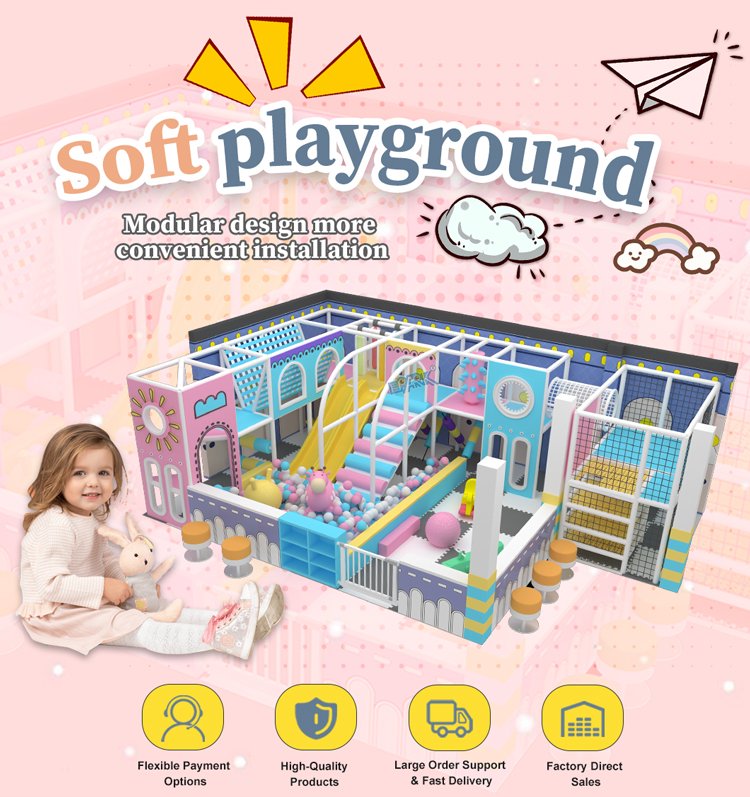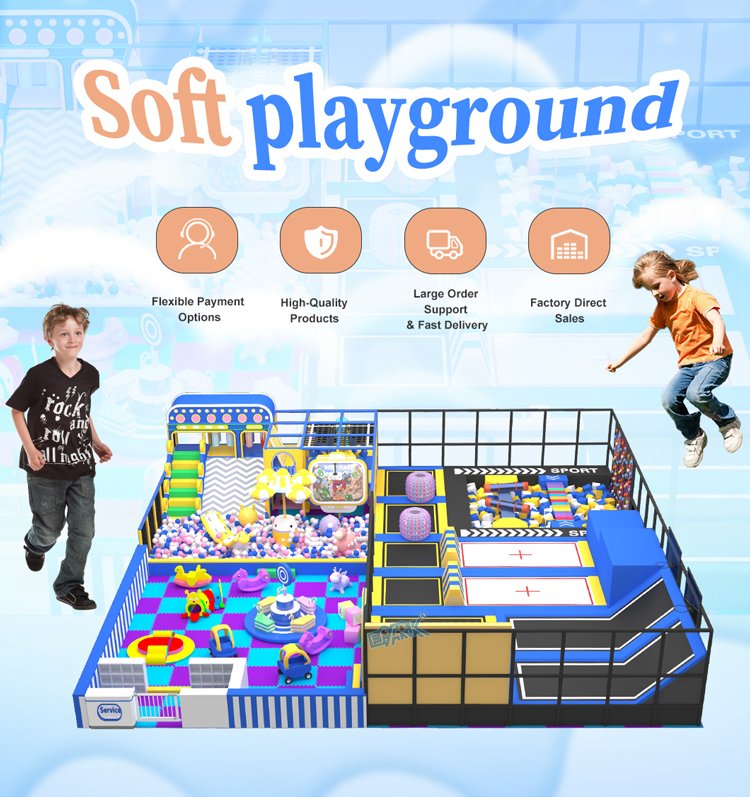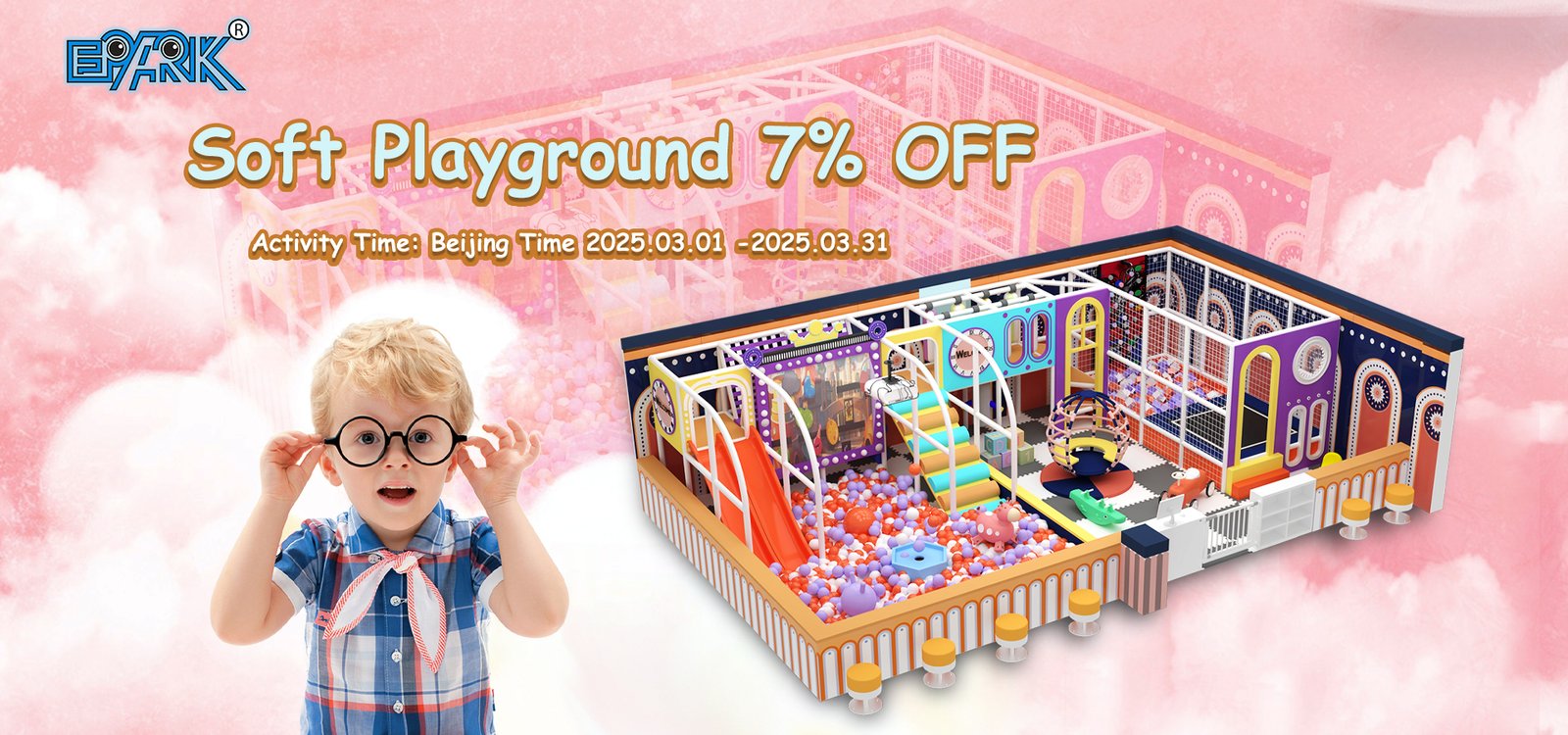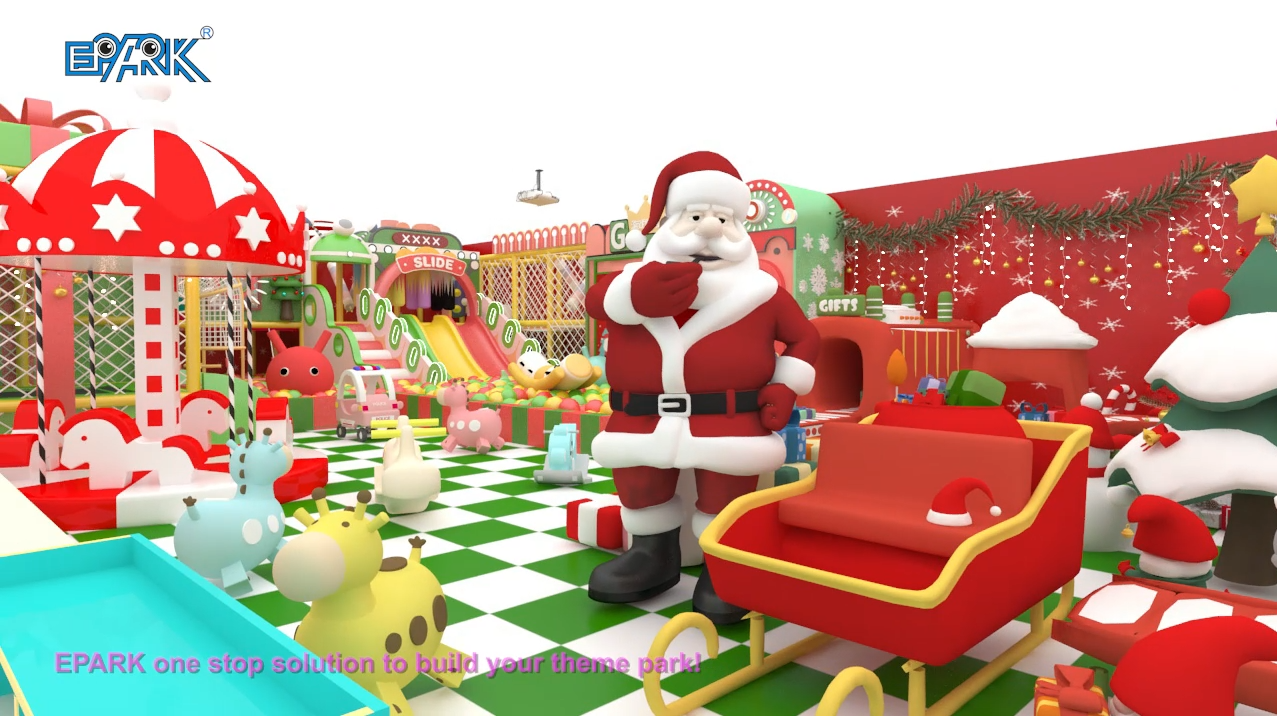Planning a layout for an indoor playground involves strategic design to maximize safety, fun, and accessibility while utilizing the available space efficiently. Here’s a step-by-step guide:
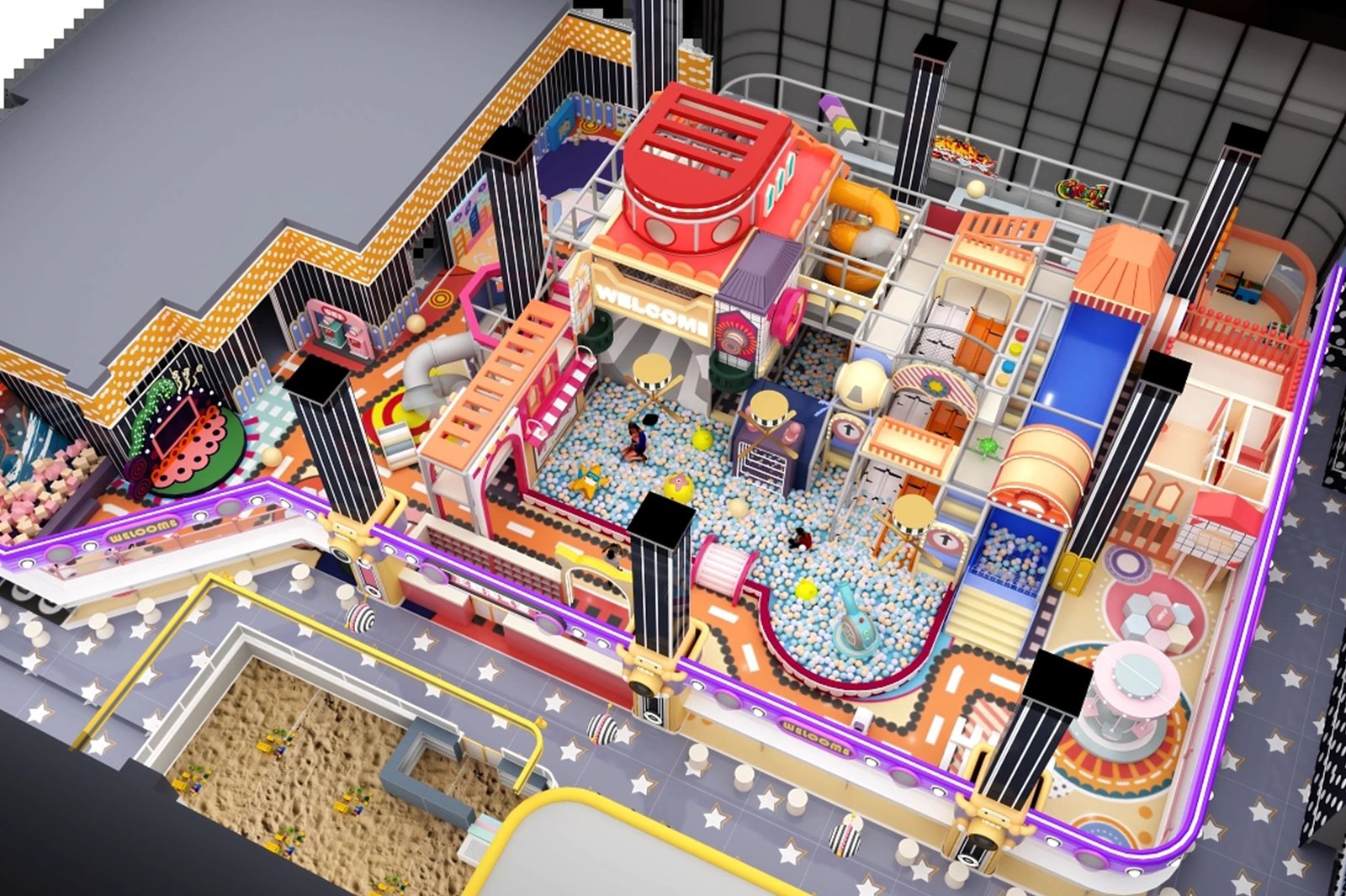
1. Understand Your Goals and Audience
- Identify your target age group: Toddlers, preschoolers, older children, or mixed ages.
- Define the theme: Consider a specific theme (jungle, space, cityscape) to create a cohesive look and feel.
- Purpose of the space: Recreational play, educational activities, or mixed-use.
2. Assess the Space
- Measure the area: Take accurate dimensions, including ceiling height.
- Identify structural elements: Note columns, walls, windows, doors, and electrical outlets.
- Consider safety zones: Ensure there’s ample room around play equipment to prevent accidents.
3. Layout Zones
Divide the space into well-defined zones for different activities:
- Active play: Climbing structures, slides, ball pits, trampolines.
- Creative play: Building blocks, craft tables, or pretend-play areas.
- Quiet play: Reading nooks, sensory areas, or puzzle zones.
- Toddler zone: Separate area with age-appropriate, soft play elements.
- Seating for parents/caregivers: Provide comfortable, supervised spaces.
4. Choose Equipment
- Select modular and age-appropriate equipment: Incorporate slides, tunnels, and climbing walls designed for the target age group.
- Opt for durable materials: Use non-toxic, easy-to-clean surfaces like plastic, foam, or coated metal.
- Add interactive features: Include digital games, light-up panels, or sound elements to engage kids.
5. Safety First
- Install soft flooring: Use rubber mats, foam tiles, or padded carpet to cushion falls.
- Design open sightlines: Allow parents and staff to monitor children easily.
- Follow safety standards: Adhere to guidelines from organizations like ASTM International or EN1176 for playground safety.
- Include emergency exits: Ensure clear pathways and compliance with fire safety codes.
6. Optimize Flow and Accessibility
- Plan for traffic flow: Avoid bottlenecks by spacing out popular attractions.
- Create easy transitions: Design clear pathways connecting zones.
- Ensure inclusivity: Include features accessible for children with disabilities, such as ramps, sensory panels, or wheelchair-friendly play areas.
7. Incorporate Amenities
- Seating and rest areas: Add benches or lounge chairs for caregivers.
- Storage solutions: Provide cubbies, lockers, or coat racks for personal belongings.
- Cafeteria/snack bar: Include a small dining area with kid-friendly tables.
- Restrooms: Ensure restrooms or changing areas are close by and child-friendly.
8. Lighting and Decor
- Use bright, cheerful lighting: Avoid harsh or dim lighting; opt for LED lights with warm tones.
- Decorate with vibrant colors: Use murals, decals, or props matching your theme.
- Minimize distractions: Keep decor playful but not overwhelming.
9. Technology Integration
- Add interactive panels: Digital screens or touch-based games.
- Install sound systems: Play child-friendly music or themed sounds.
- Enable Wi-Fi: Offer connectivity for caregivers.
10. Budgeting and Sourcing
- Set a realistic budget: Include costs for equipment, installation, and ongoing maintenance.
- Source quality suppliers: Choose vendors with a reputation for safe, durable play equipment.
- Plan for future upgrades: Leave space for expansion or replacement.
11. Test and Feedback
- Create a prototype or digital model: Use design software like SketchUp or CAD for visualization.
- Host a trial run: Invite kids and caregivers for feedback.
- Make adjustments: Incorporate suggestions to improve usability and enjoyment.
12. Maintain and Update
- Schedule regular inspections: Check equipment and flooring for wear and tear.
- Clean thoroughly: Establish a daily cleaning routine to maintain hygiene.
- Rotate or upgrade attractions: Keep the playground fresh and exciting with periodic updates.
Designing an indoor playground is about creating a safe, fun, and stimulating environment where children can play, learn, and explore. Proper planning ensures it becomes a cherished space for families.

